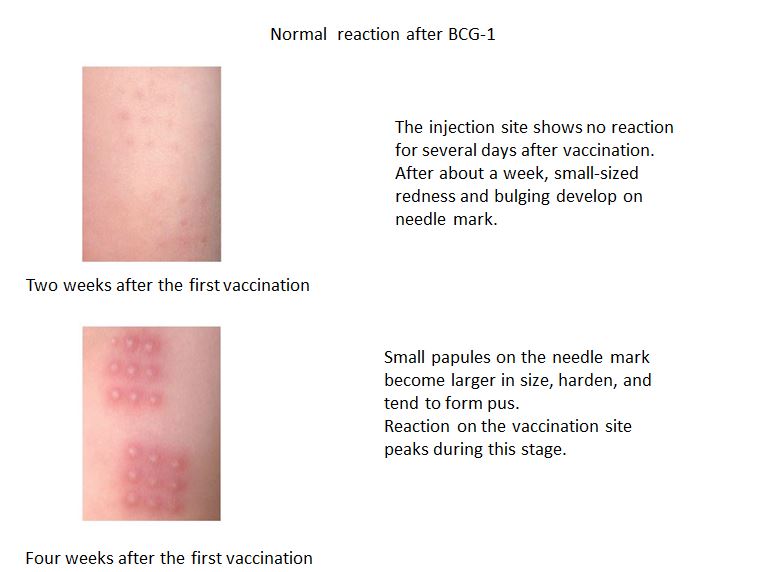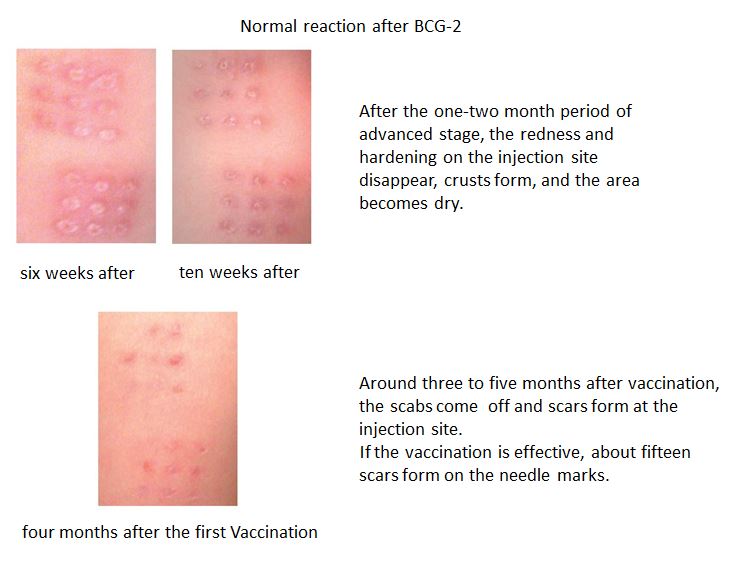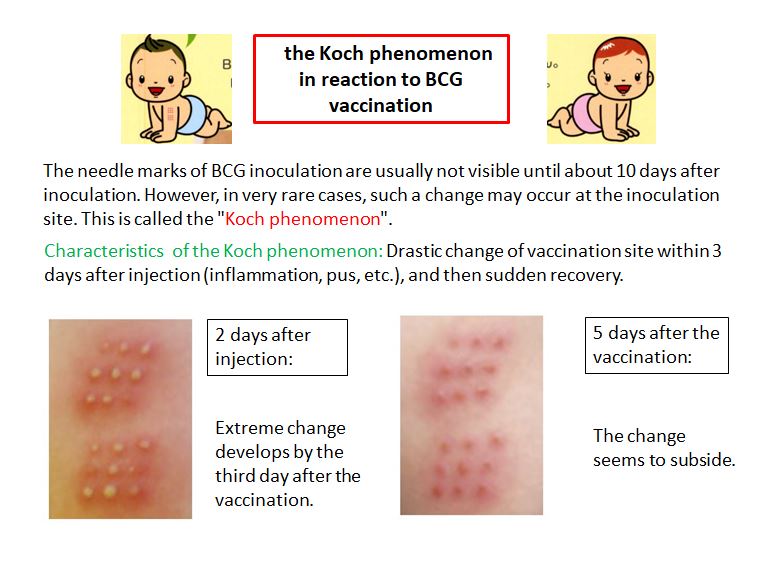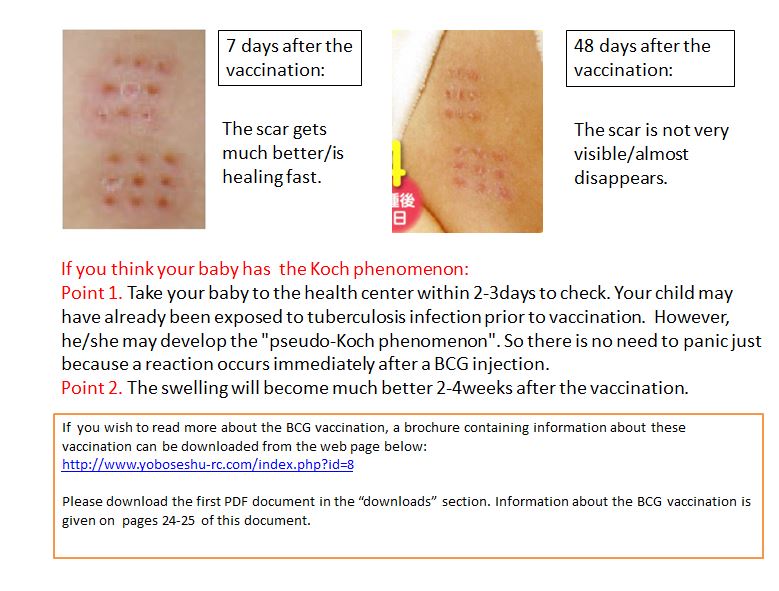
04 Dec Special Circumstances on Tuberculosis and BCG in Japan
 As a result of the decline in the number of tuberculosis patients in North America and West Europe, BCG is no more provided in these areas. However, BCG is still one of the routine vaccines in Japan, because the number of tuberculosis patients ranks at the middle level among the world. Besides, the time schedule for BCG in Japan is also different from many other countries. BCG is given at birth mostly in order to prevent early infection from care takers.
As a result of the decline in the number of tuberculosis patients in North America and West Europe, BCG is no more provided in these areas. However, BCG is still one of the routine vaccines in Japan, because the number of tuberculosis patients ranks at the middle level among the world. Besides, the time schedule for BCG in Japan is also different from many other countries. BCG is given at birth mostly in order to prevent early infection from care takers.
However we are most concerned about whole-body BCG infection to occur in the immune-deficient babies, who are born as many as 20-30 in one million births. By the age of 4months, it will become apparent if the baby is not immune-deficient.That’s why BCG is given once at the age of 5 months (between 5 months and 7months) in Japan.
Please understand this policy of the Japanese vaccination administration, then decide what you will give to your babies.
Keiko Fukuyama M.D.
Please refer to “Do you have plans to take your baby who is less than 5 months old to a country with a higher prevalence of tuberculosis than Japan?”
Method of administration
The BCG vaccine is made from attenuated Mycobacterium bovis. The method used to administer the BCG vaccination in Japan is a percutaneous injection using an apparatus with multiple needles that is pressed into two locations on the upper arm. The vaccine should not be given elsewhere on the body due to possible adverse reactions, including keloid formation.
Taken from “Vaccination and Children’s Health 2020” of Vaccination Research Center
BCG (TB) vaccine side effects
Red pockmarks appear on the vaccination site around 10 days after vaccination, and some may discharge a small amount of pus. This reaction peaks about 4 weeks after vaccination; subsequently, the pockmarks are covered with scabs and heal completely by three months after vaccination, leaving only tiny scars. This scarring is not an abnormal reaction but evidence that a person has acquired immunity through the BCG vaccination.
If your child is already infected with tuberculosis, within 10 days of vaccination you may observe the Koch phenomenon (a series of reactions, including local redness, swelling, and festering at the injection site, which generally heal after 2 to 4 weeks, with scarring). This adverse reaction appears at an early stage, i.e., several days after vaccination (generally around 10 days after), which is different from the usual adverse reaction seen on the vaccination site. If you observe an adverse reaction that you believe is Koch phenomenon, immediately consult your municipal office or a medical institution.
Public Foundation of the Vaccination Research Center
Following images are “Normal reaction after BCG”


There is no need to worry about these reactions, as they are all normal and will heal on their own. Simply wait and see while keeping the inoculation site clean.
However, if the site has been pussy or the needle marks have become larger in size and formed ulcers over several months, he/she may need to see a doctor, as treatment may be necessary.
Following images are “the Koch phenomenon”


The image shown above is provided by Japan Anti-Tuberculosis Association. 写真提供:結核予防会
Source: Japan Anti-Tuberculosis Association(JATA)
Research Institute of Tuberculosis(RIT)
the Koch phenomenon
Vaccination and Children’s Health 2022Version
Last reviewed on December 23, 2020


